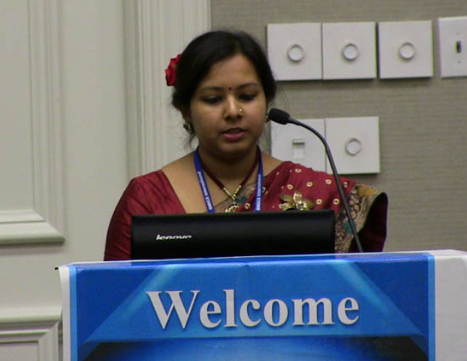Scientific Program

Rajlaxmi Basu
Institute of Hematology and Transfusion Medicine, Medical College, Kolkata, India.
Biography:
Rajlaxmi Basu is a PhD student, working at Institute of Hematology and Transfusion Medicine and a registered Fellow at University of Calcutta. She has exposure in occupational toxicology and occupational health and has attained many international conferences past days with utmost fervor and many more in National and International level. She has published 6 international articles in premium peer reviewed journals and 3 are in pipe lines and a book chapter also been published. She is also interested to explore in writing and attach to an editorial board of a journal.
Abstract
This present report is about the couple of genetic polymorphism CYPIAI and GSTTI, GSTMI study in addicted male sewage workers. Additionally, whole blood Selenium (Se) concentration and intensity of DNA damage in each polymorphic group population were also examined. Results indicate that about 50.72% of total number of experiment subject (N=138) were with normal genotype and rest are with polymorphism of at least one gene. Here population group consisting of GSTTI null, GSTMI null had the most elevated whole blood Se concentration and it is significantly (p<0.05) higher than all other group. Further another group comprising with GSTMI null, CYPIAI mutated (heterozygous/ homozygous) with highest degree of intensity of DNA damage which is statistically significant (p<0.05) than any other discussed group. From this study it is clear that these couple of group with a genetic make-up of GSTTI null, GSTMI null and CYPIAI wild type andGSTMI null , CYPIAI mutated ( heterozygous/ homozygous) are the most alarming conditioned group. Here population with normal genotype was considered as control because an intragroup study has performed for a patch of occupationally exposed workers so they are matched in every respect and a comparison has performed and reported about the essential elemental status like Se and intensity of DNA damage. This is important for these study population to investigate few extra health status coupled with genetic make up.
- Toxicity Testing
- Pharmacology
- Drug-Drug Interactions and Medicinal Toxicology
- Environmental and Eco Toxicology
- Drug Toxicology
- Toxicology Current Advances
- Applied Toxicology
- Immunotoxicology
- Food Toxicology
- Genotoxicity
- Industrial and Occupational Toxicology
- Medical and Clinical Toxicology

